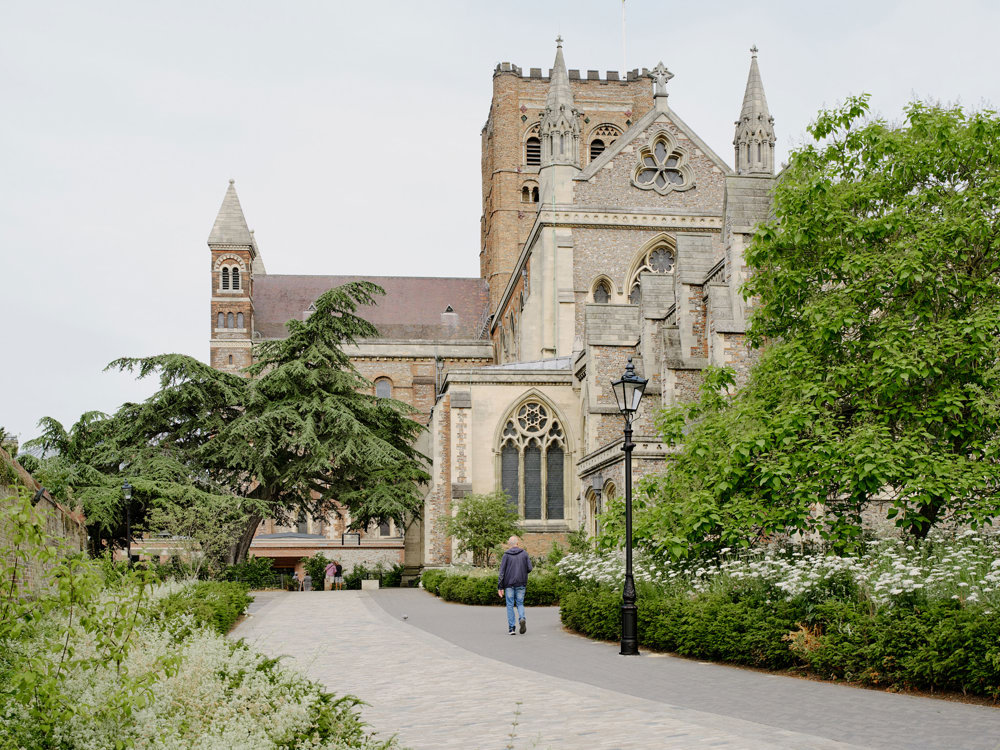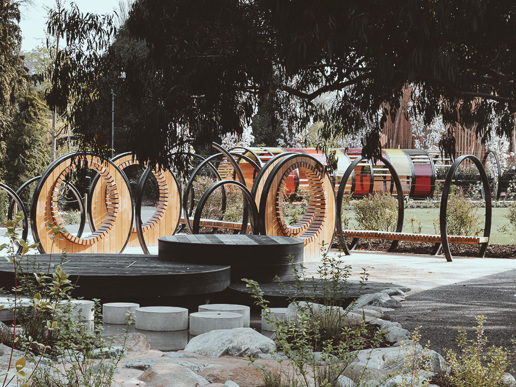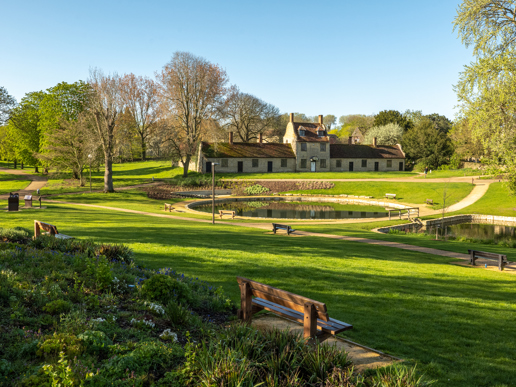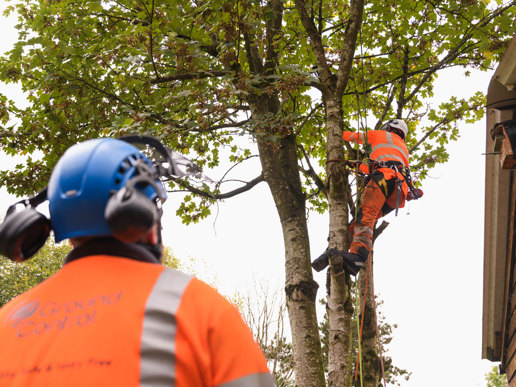Sumpter Yard Revived, St Albans Cathedral
Overview:
Ground Control was appointed to deliver the second phase of improvements within the wider Precinct project to upgrade and restore the east end environs of St Albans Cathedral. ‘Sumpter Yard Revived’ focuses on improving the Cathedral's entrance to create “a beautiful, accessible and welcoming garden approach to the Cathedral”.
Hard Landscaping:
- Creating accessible brick shared surfaces
- Restoring existing stone surfaces
- Relaying existing roadway granite setts
- Restoring historic walls
- Creation of accessible blue badge parking
- Installing street furniture
- Installing bespoke stonework copings and monolithic blocks
- Demolition and site clearance works
Soft Landscaping:
- Installing bespoke stonework copings and monolithic blocks
- Protecting trees in line with a Tree Protection Plan
- Planting; physic garden, wildflower meadow, formal yew hedging, orchard and pleached trees
Ecological habitat features
The delivery of the project was completed on behalf of The Cathedral and Abbey Church of St Albans. Key partners also included:
- Design by J&L Gibbons
- Phase One works (surrounding the Welcome Centre) completed in part by Nicholsons.
 In 2023, the project received a BALI (British Association of Landscape Industries) award for ‘Hard Landscaping Construction (Non-Domestic) – Under £500k’’.
In 2023, the project received a BALI (British Association of Landscape Industries) award for ‘Hard Landscaping Construction (Non-Domestic) – Under £500k’’.
The award cited how the works had "enhanced a tired landscape attracting more visitors to the site and increasing the aesthetics of the surroundings”.
- Design works completed by J&L Gibbons won the 2023 Landscape Institute awards in the 'Excellence in Heritage and Culture' category.
Scope of Works:
The Cathedral’s eastern entrance Welcome Centre off Sumpter Yard is a busy public space and a key public route across the city along a right-of-way. This meant that all works were completed with the safety of the public and staff paramount to the project, and with close coordination with the client to ensure that the day-to-day operations, visitor attractions, and place of worship could remain undisturbed.
Ground Control undertook both the hard and soft landscaping, informed by detailed surveys, in close coordination with archaeological investigations under arboricultural and ecological supervision.
The result of the improvements was renovated pathways, shared surfaces and the re-creation of the historic walled garden with newly planted spaces that complement the historical setting of the Grade I listed Cathedral and its Scheduled Monument context.
Paving and Stone Works
To ensure the renovations were keeping with the character of the City and the wider historic Cathedral Precinct, the original yorkstone and granite paving was lifted and stored for reuse in the project. To achieve full accessibility, new paths were laid with Chelmer Valley Charcoal clay brick paving. This paving was chosen to match the colours of the City’s pavement heritage, reference the slender Roman clay bricks of the Cathedral façade, while also being a high-quality product that is suitable for use by pedestrians and vehicles.
Further stone works were also completed with the restoration of existing listed walls, alongside alterations to more recent brickwork, drawing visitors into the adjacent Vintry Garden. These works fixed vents, cracks, fissures, or other defects to ensure the future strength, durability, and appearance of the grounds. The high quality and detailed finish included colour-matching the new lime mortar to that in the existing walls.

New bespoke yorkstone copings and monolithic stone blocks were installed at the Welcome Centre and around a veteran Category A* Cedar of Lebanon tree to complement the original historic character.
Additional Landscaping Works
The soft landscaping involved physic garden planting to re-create the historic walled gardens of Sumpter Yard which would have once been a productive monastic landscape. This included creating and installing several new elements, whilst importantly retaining and protecting the trees and features outlined in the Tree Protection Plan, and Tree Constraints Plan. Within the site, planting included wildflower meadow turf and plugs, formal yew hedging, perennial and shrub planting alongside fruit trees planted so as not to interfere with the underlying archaeological features and underground infrastructure.

Within this area, bespoke removable and fixed oak bollards were installed to limit vehicular access and prioritise pedestrian access, as well as timber benches and an insect log pile formed from a tree that was removed as part of the works.
As a historically significant location, all excavations and ground works were undertaken under an archaeological watching brief. During these works, historic skeleton remains were found close to the surface. These remains were accurately recorded and removed by the project archaeologists, with construction works sequenced to avoid associated delays.
Landsape Construction

Royal Botanic Gardens Kew

A record year for BALI Awards at Ground Control




